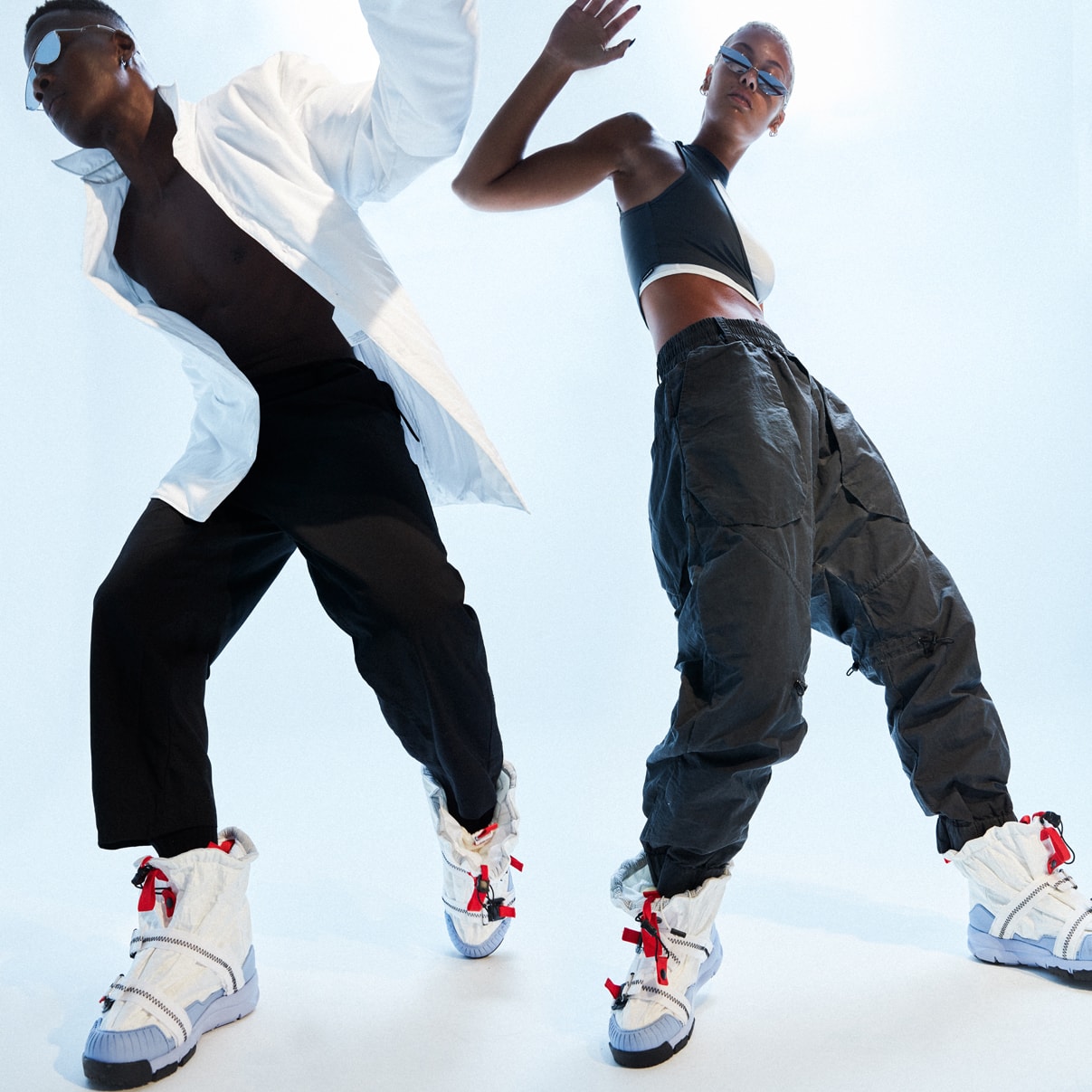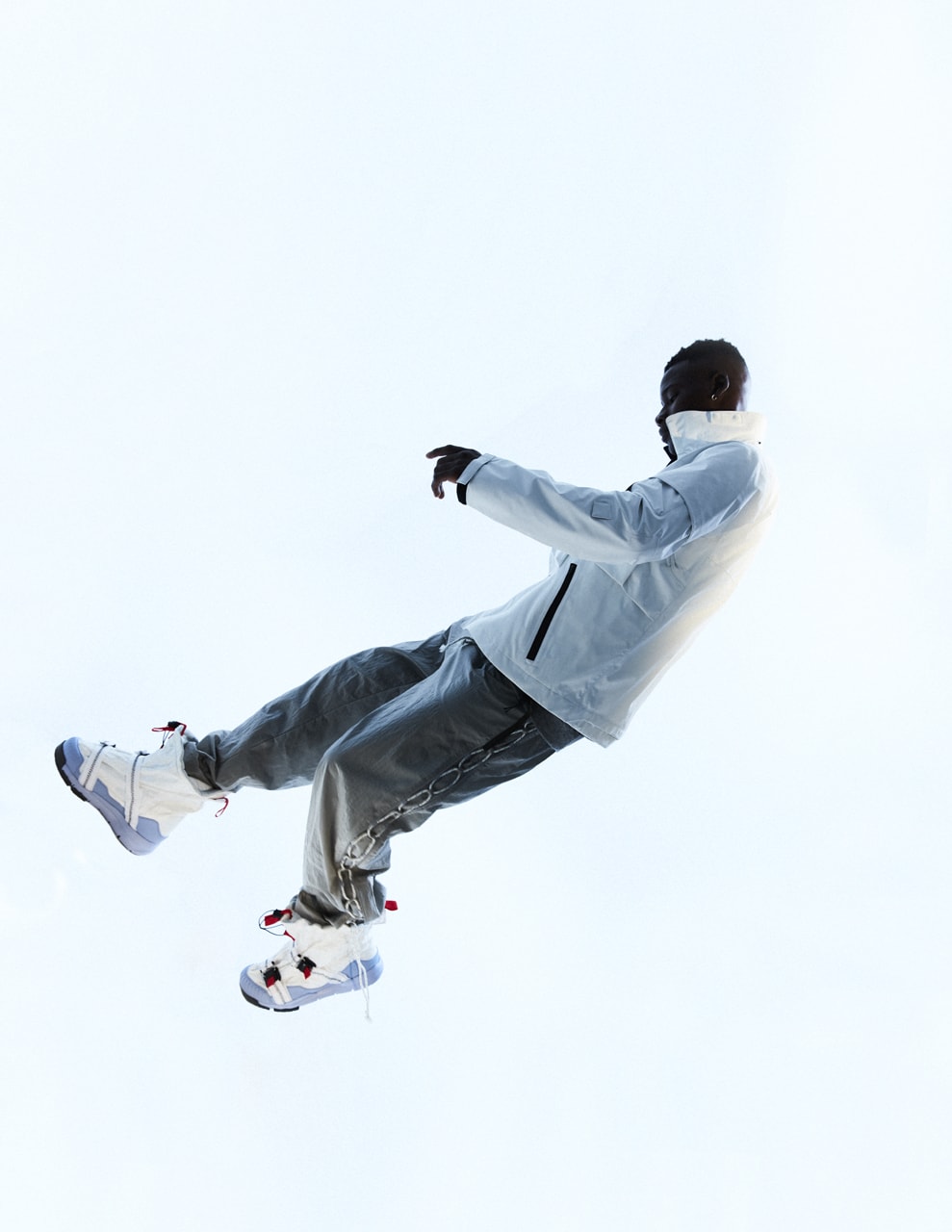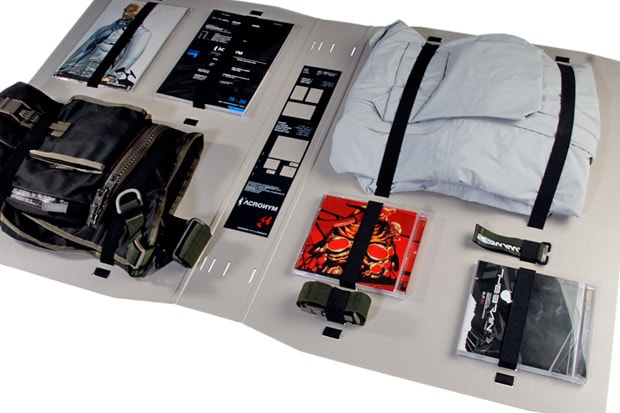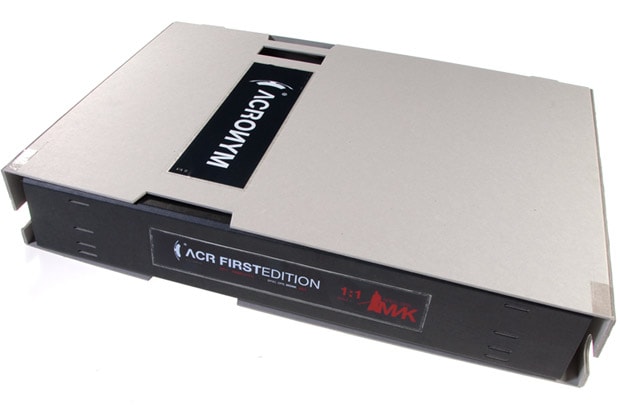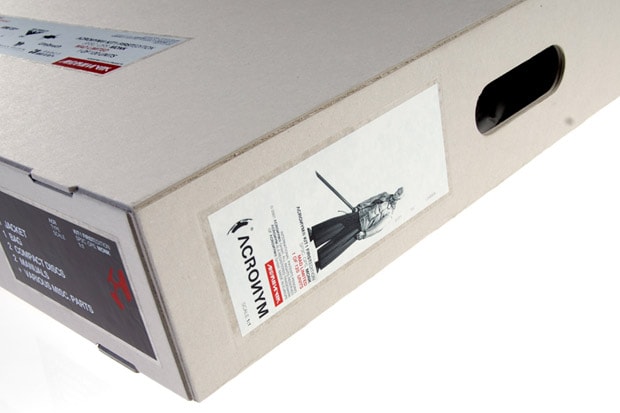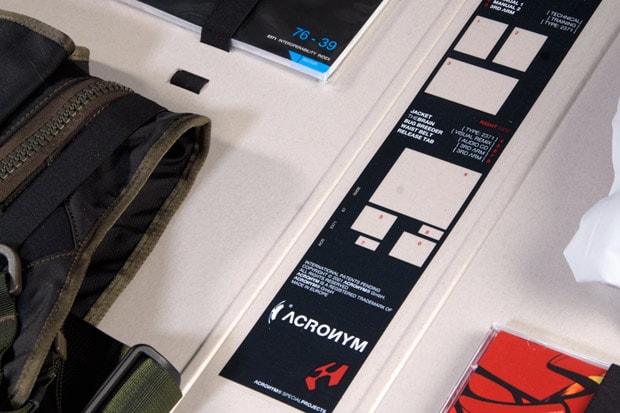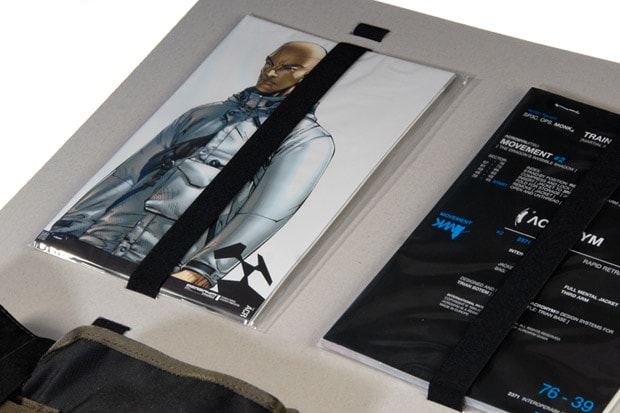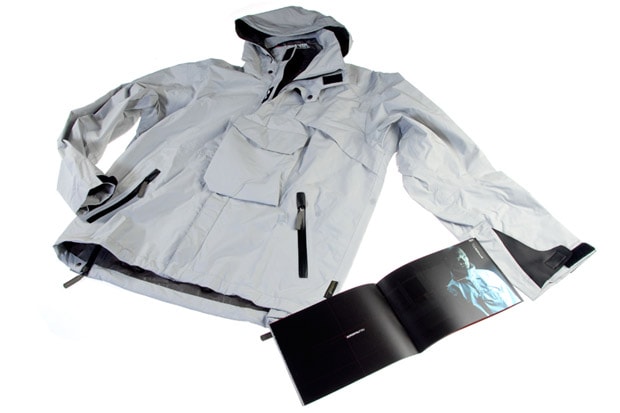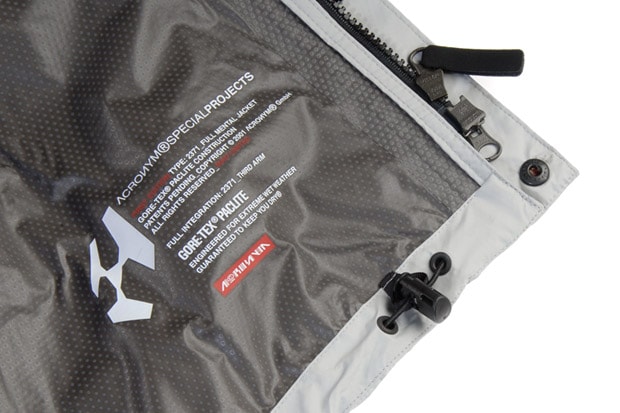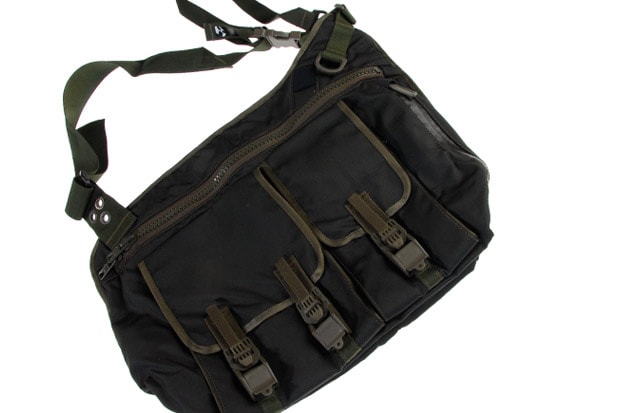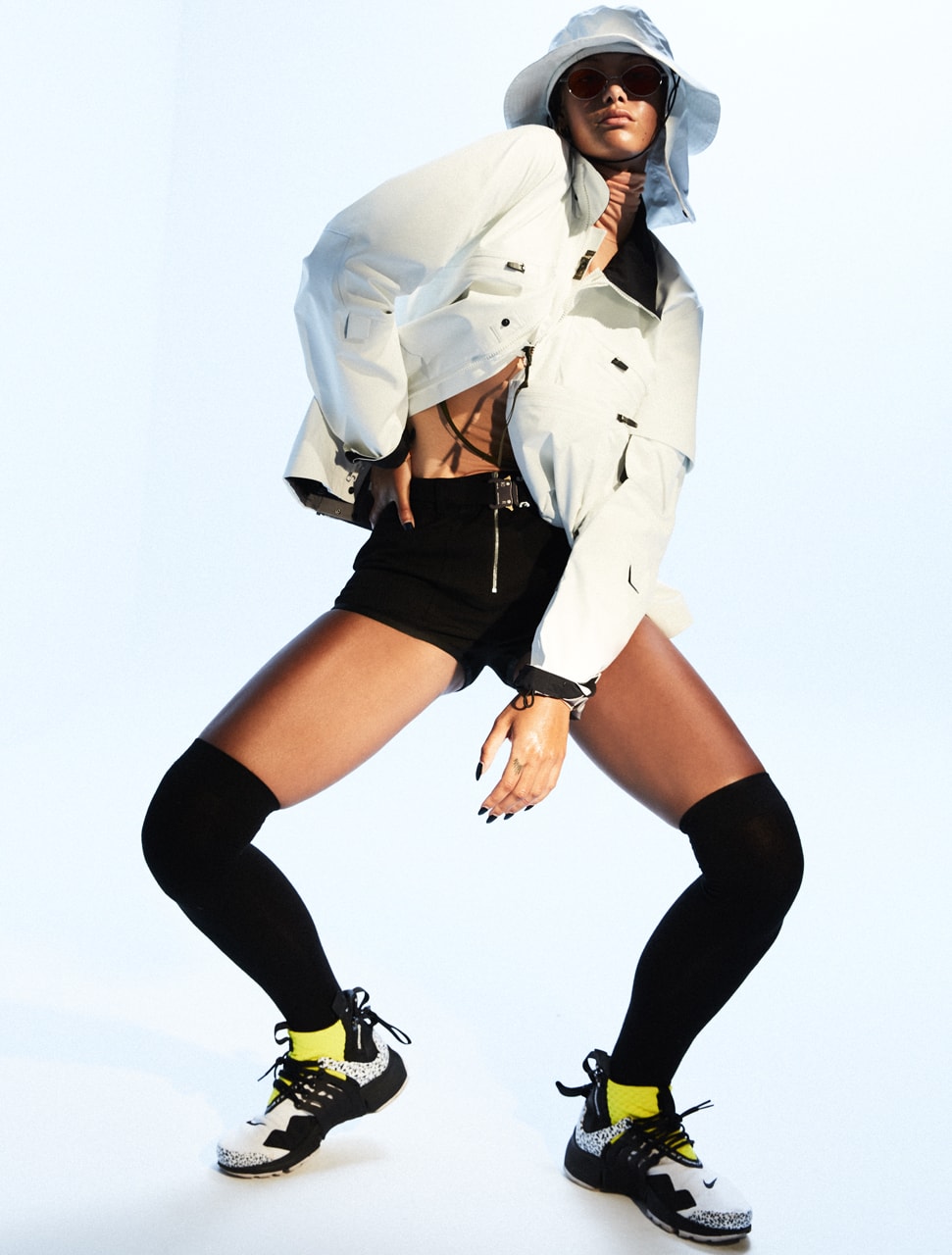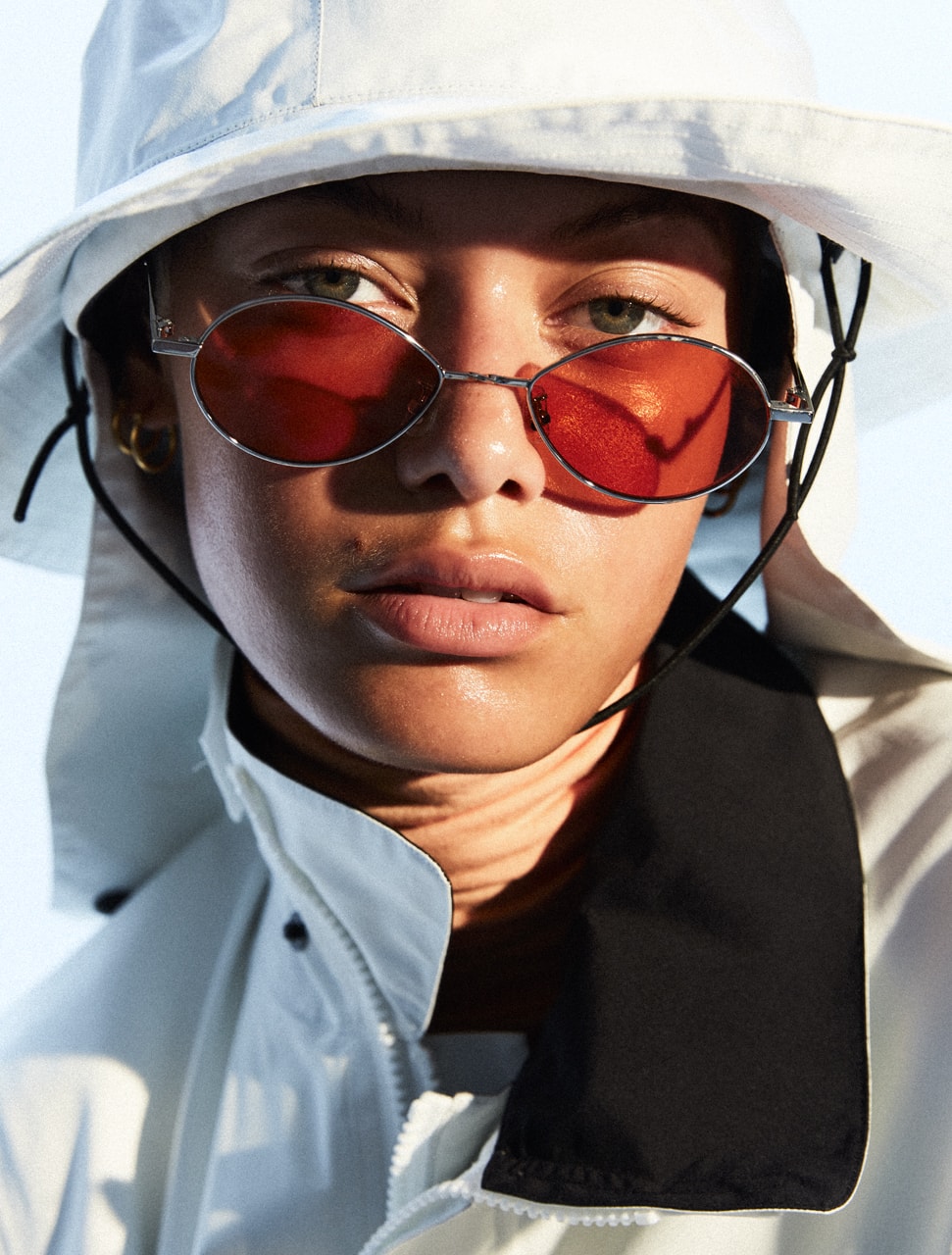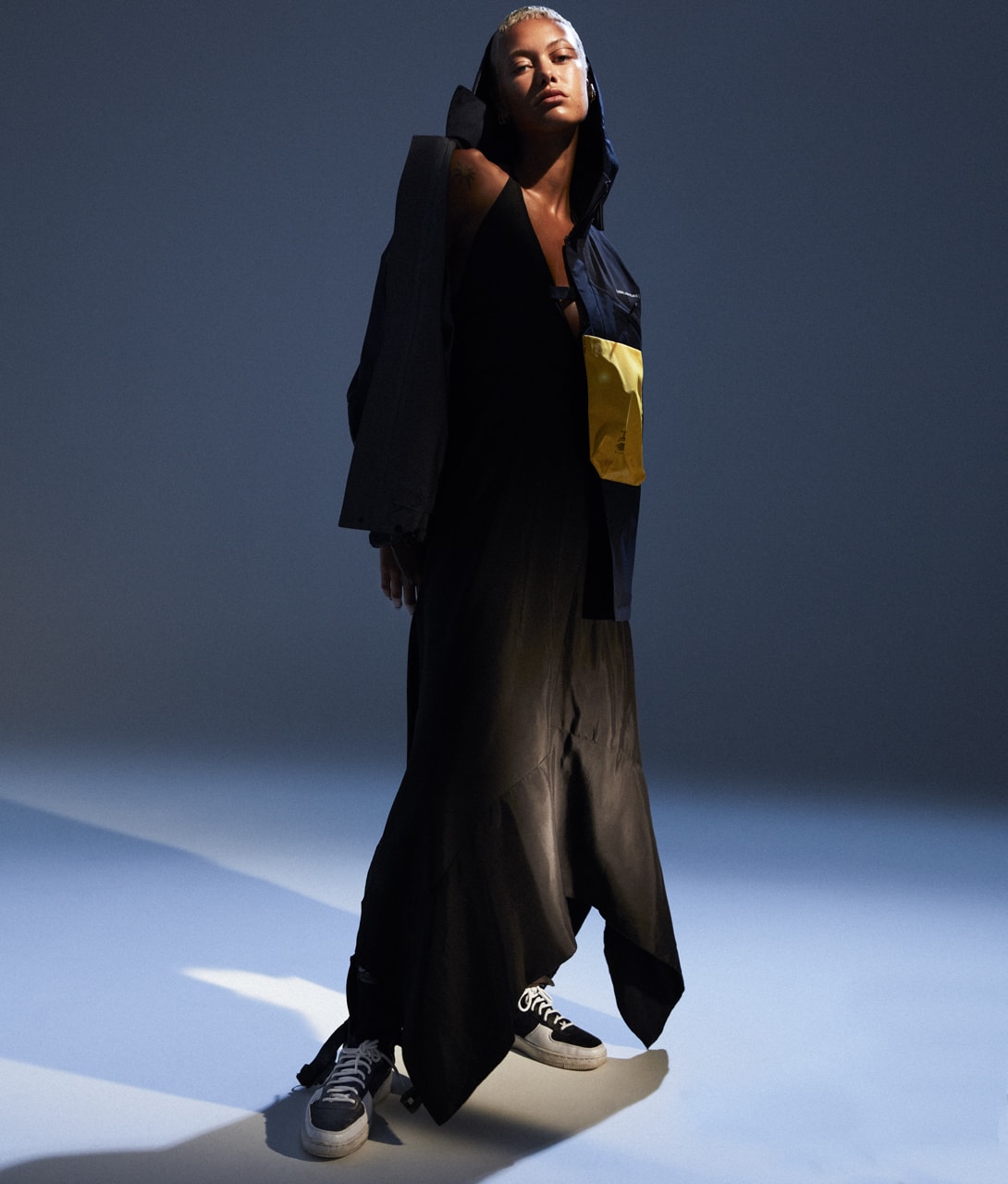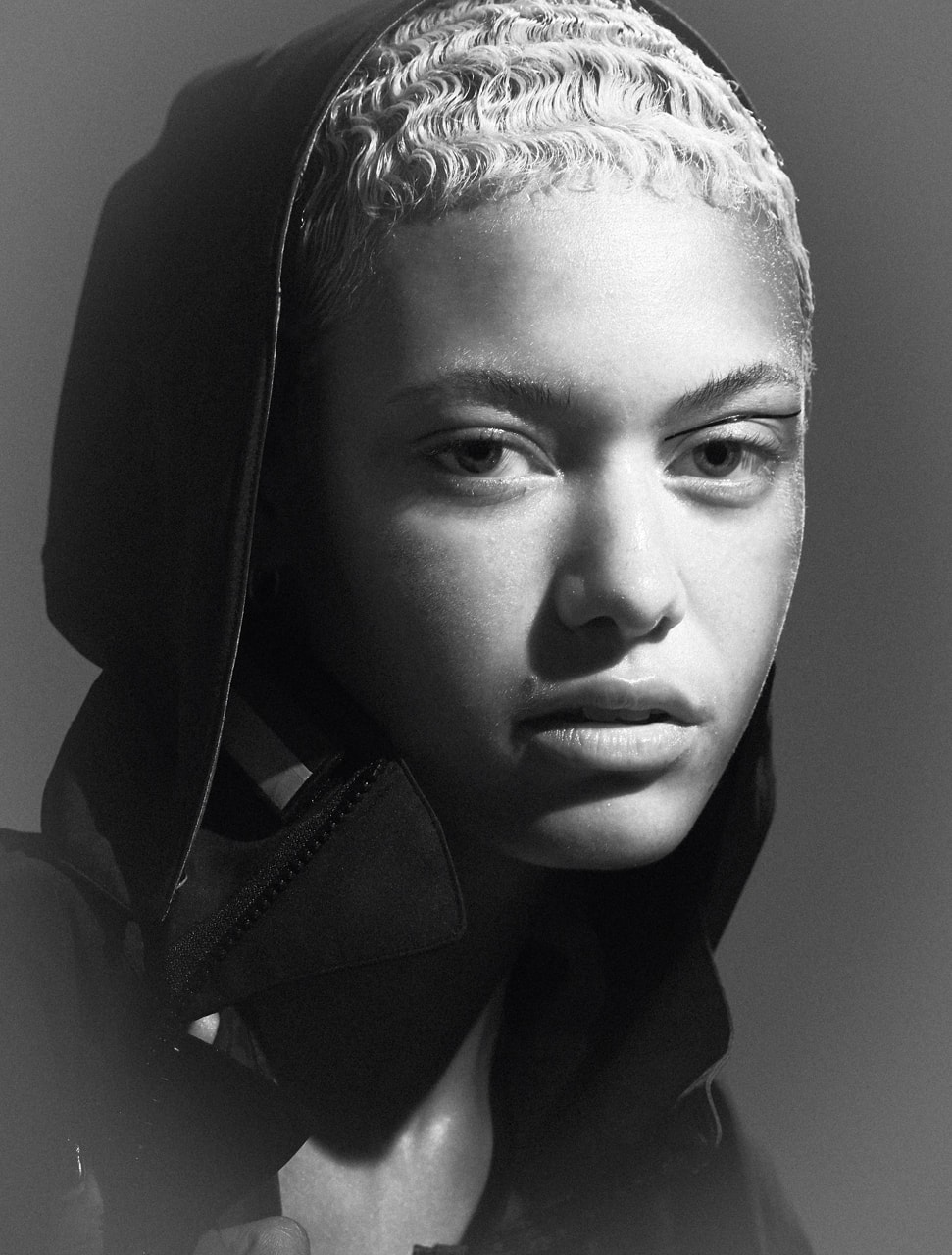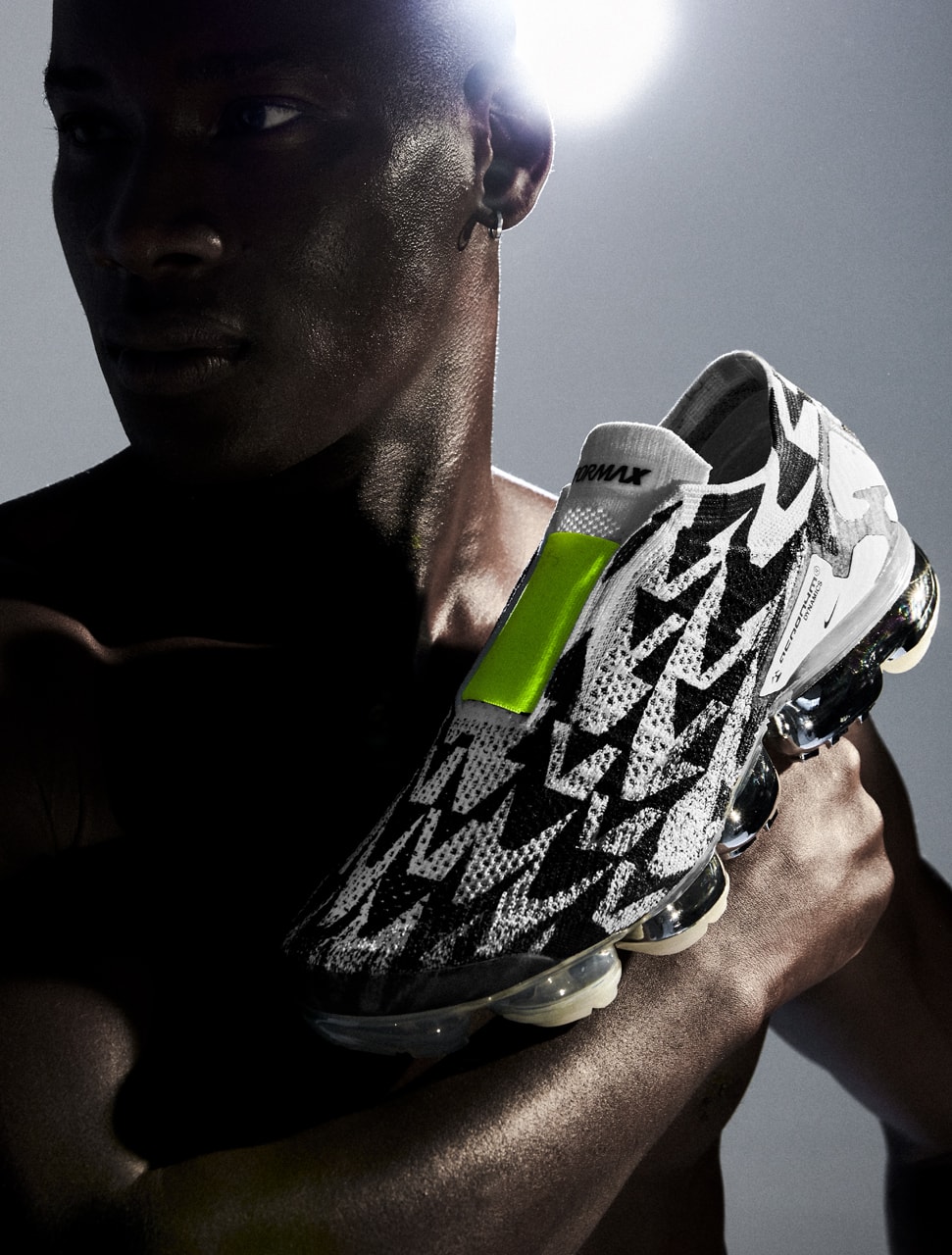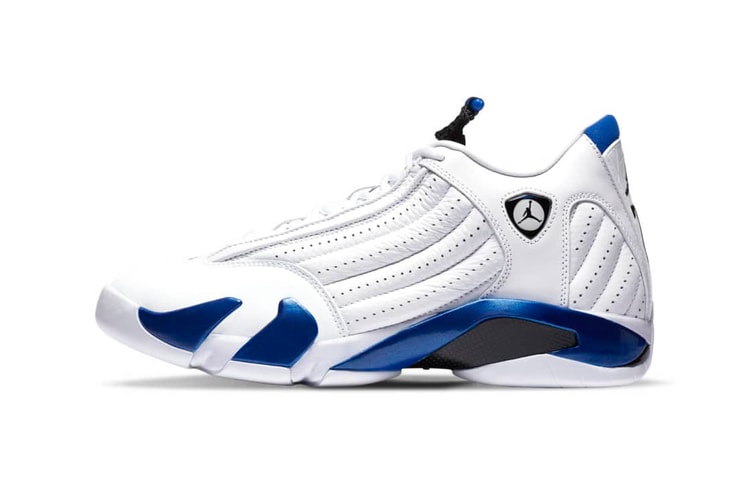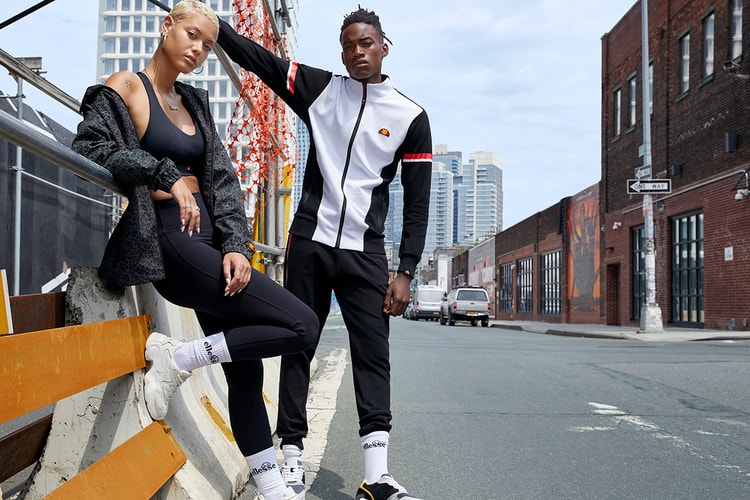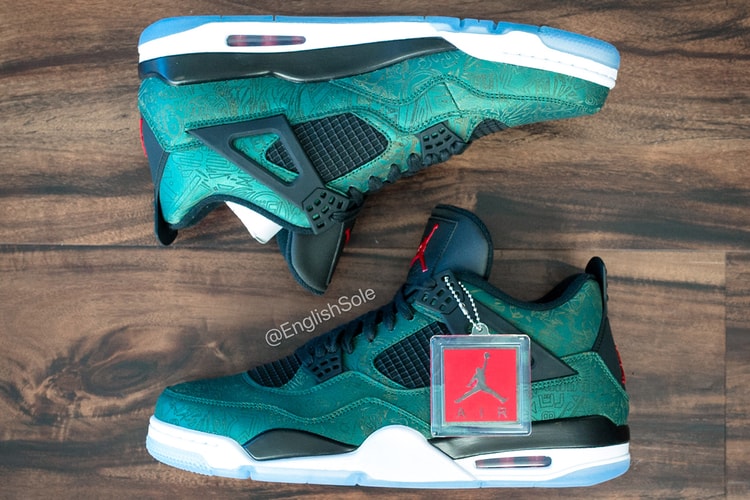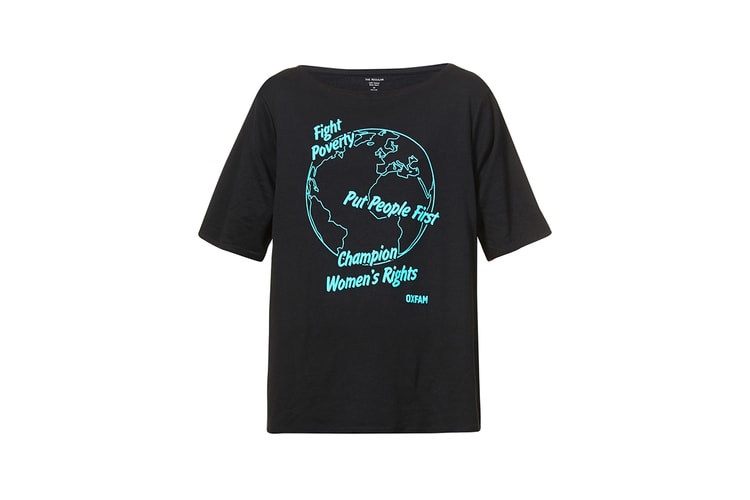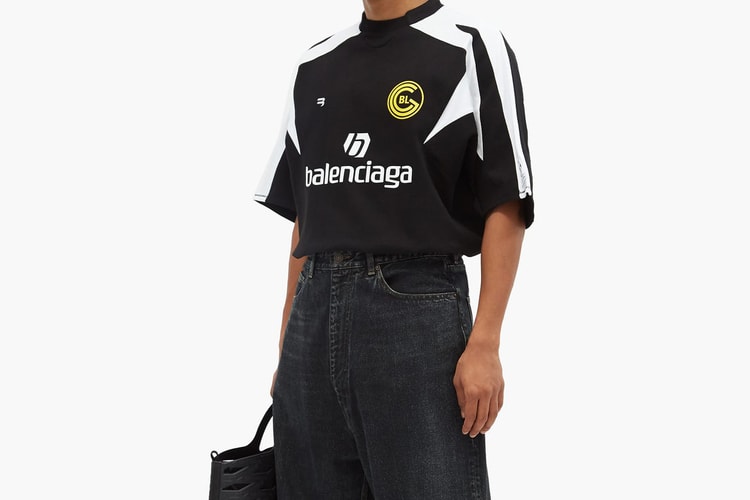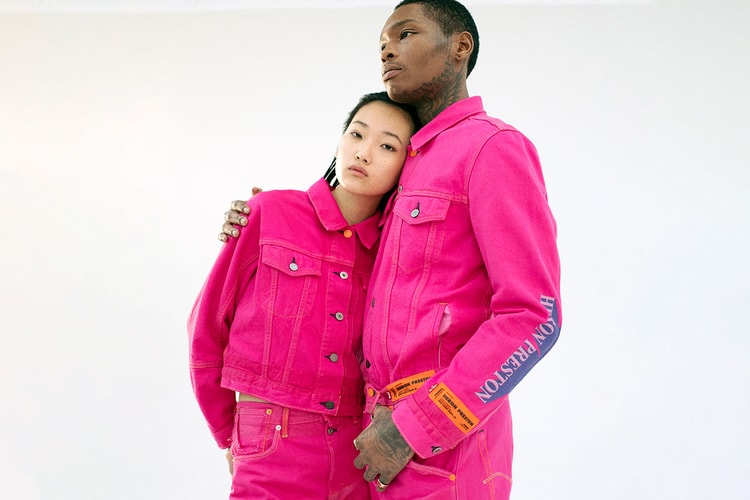Errolson Hugh No Longer Believes in Business as Usual
The ACRONYM co-founder and Nothing Knew’s Karl Nikolai on their HBX partnership and fighting food apartheid.
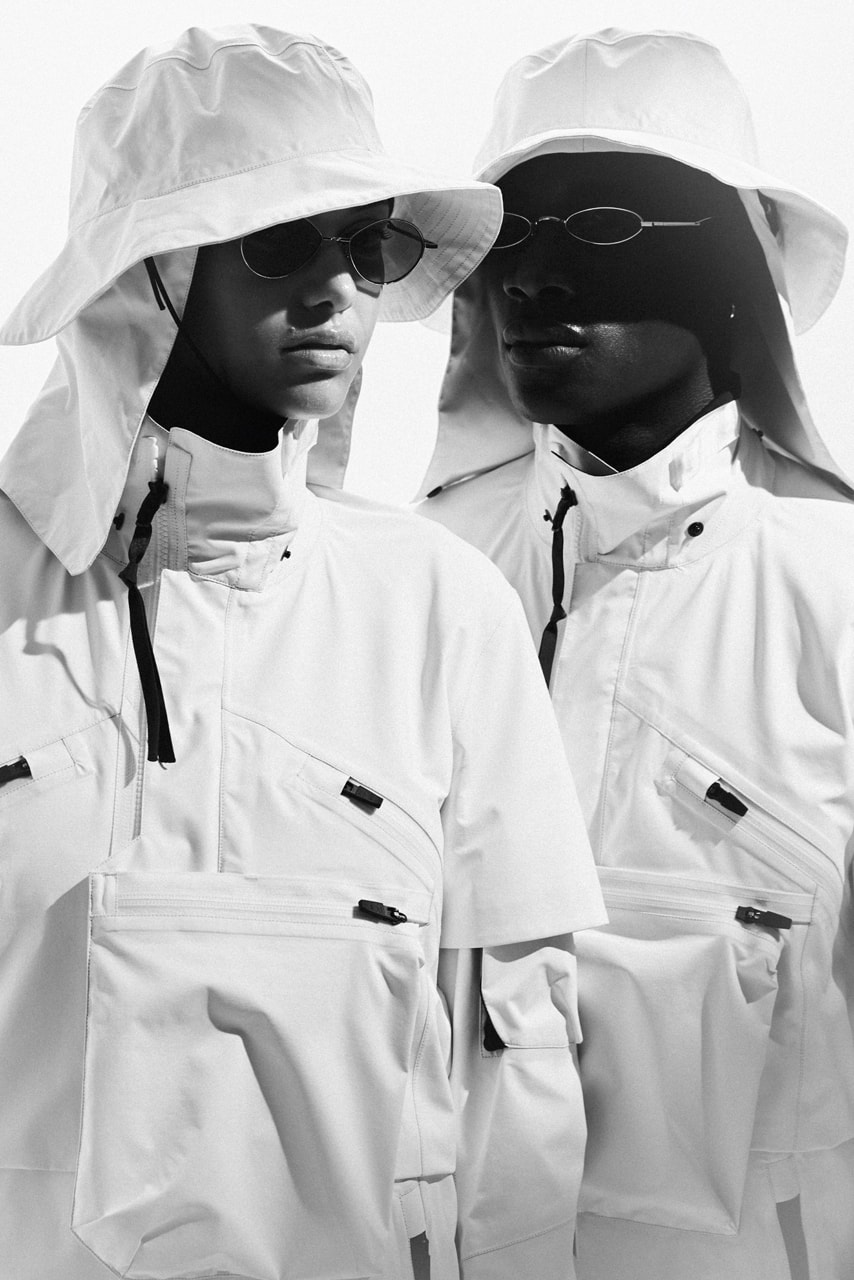
Errolson Hugh No Longer Believes in Business as Usual
The ACRONYM co-founder and Nothing Knew’s Karl Nikolai on their HBX partnership and fighting food apartheid.
You are reading your free article for this month.
Members-only
Errolson Hugh of ACRONYM and Karl Nikolai of Nothing Knew became fast friends after bonding over a shared love of photography six years ago. They’ve recently come together again over a mutual concern for the coronavirus pandemic’s impact on Americans, especially its disproportionate effect on Black communities.
In response, Hugh and Nikolai partnered with HBX for a once-in-a-lifetime giveaway. The pair have sourced exclusive items from their personal archives to generate funds for Olympia Auset’s SÜPRMARKT, which sources low-cost organic food and delivers to underserved Los Angeles residents. SÜPRMARKT has provided 70,000 pounds of organics since 2016; this giveaway will help them open South Central’s first full service organic grocery with subsidized health foods, wellness goods, and prepared meals. Auset explained that it expects “to serve 1,000 Angelenos weekly by 2022.”
Ahead of the launch, Hugh and Nikolai spoke at length about their personal projects and ACRONYM’s history, pulling back the curtain on the legendary technical apparel label. They also reflect on the nature of a consumerist society and the importance of reassessing priorities in times of crisis.
Karl: I want to hear it from you: do you remember how we first met?
Errolson: It was funny because I actually had this super weird day in Los Angeles. Randomly a friend of mine was doing a photo shoot in Costa Mesa and couldn’t get a ride, so she asked me, “Can you drive me like two hours south and drop me off?” I was like, “Sure.” On the way there I called another friend who I know from Tokyo to meet at this little cafe on this street.
K: Right by your friend’s store, Commissary.
E: Exactly. Same street. So we’re sitting there having breakfast and then Karl sits down. And we both sort of look at each other like, “I know you.” And I’m like, “You know what, I just followed you the other day on Instagram.” Then we started chatting. It’s super funny how that worked out.
K: So, to start: what’s your experience with clothing archives?
E: Very early on in our careers, like the late ’90s, we had the chance to work with Massimo Osti, the original founder of Stone Island [and CP Company], by a series of random circumstances. We ended up in his studio in Bologna, where he has this insane archive of probably 20,000 garments. The way he worked was basically sampling, where he’d get all these reference pieces and — instead of drawing — he would actually cut up sample pieces and staple them together.
He would look at not only the garments’ design, but also like, “Ah, somebody patched it here,” or “Here the elbow wore out,” or “They must have had the keys in this pocket,” and learn things from that. That kind of really opened up our eyes to the value of working with physical samples.
There was another guy in the studio also named Massimo. His job was to acquire interesting samples and he had spent the last 20 years flying around the world buying cool stuff. We had a funny conversation one day because he’s like, “It’s kind of boring now because we had it all right, there are no new military samples. There’s nothing new to collect.”
K: So when you started designing for Shadow Project, it was almost like a completion of the circle.
E: Kind of. Actually, almost 10 years had passed in between those two connections. The year [after we first visited], we were thinking about this incredible trip that we had. It really left an impression. At some point we were like, “We’ve got to figure out a way to get back there.” So we sent a jacket that we had designed and wrote a little letter, “Yo, you remember us? We just wanted to send you this as a token of our appreciation.”
Eventually, [Osti] wrote back, “Thank you for the jacket. Next time, you’re in Bologna, come by the studio.” Of course, we immediately invented a reason to go to Bologna. That led to a three or four month internship. This is maybe ’98.
K: And then a year later…
E: Then we started thinking about [what become] ACRONYM. I think we actually incorporated in ‘99. The first product, the First Edition KIT-1 box that came out in 2001, took us two years.
K: Would you say that Massimo was your biggest inspiration in starting the brand?
E: Definitely one of them. If I had to name direct references, probably ’90s Helmut Lang and early Arc’teryx. At the time, most of our gigs were snowboard design. That’s where we learned how to do technical outerwear and GORE-TEX tapes.
Probably in ‘97, I met the guys from Arc’teryx, who had just put out their first outerwear, at this big outdoor industry event in Friedrichshafen, Germany. And we’re standing there at this little tiny booth with our jaws on the floor because they had introduced watertight zippers, zipper garages, lamination of GORE-TEX, all these things that no one had ever done before.
I started talking to one of the guys at the booth, who turned out to be Tom Herbst. I think they hadn’t quite realized what they’d done at the time because they came from harnesses and packs. This was their first foray into outerwear and all of these technologies they introduced, they’d been working on for years and the industry hadn’t seen them yet.
Of course, after that happened, every single piece of outerwear looked like that! Even the first jacket that we made in the KIT-1. Back then you couldn’t buy the watertight zippers [anywhere else], that was their trademark. You could only buy them from Arc’teryx because they made them themselves.
K: You’ve had that jacket remodeled and updated throughout the years. What were the references for building that design?
E: Well, when we wanted to start our own label, we realized right away that we didn’t have the money to do a collection; there was no financing. Instead, we decided that we would take all the ideas from one collection and put it into that set, which was basically two products and some accessories. That really set the DNA for the whole brand.
Those two products, the J1A jacket and 3A-1 bag, those are still the best selling products we have. I just counted the other day, I think we’re up to 18 versions of the J1A.
“I’d like people [to appreciate] how hard it is to make clothes because people have started to treat clothing as disposable.”
K: A lot of technical apparel brands try to fit different body types within one product or stick to a certain design process that seems to be limited to a certain shape. How do you approach the fitting process?
E: That’s a really good question. A lot of people don’t understand how crucial that is. When you’re doing a fit block, which is sort of like the chassis that you build everything on, it determines the silhouette in the dynamics, like freedom of motion and drape. Everything except the details.
You have to make certain assumptions about physiology and geometry. Those early decisions lock you into certain body types by necessity, so it’s very difficult. There are so many different types of humans and it’s very difficult to service everybody equally but we do the best we can.
A funny story that Carlo Rivetti [the current owner of Stone Island] told me is that one of his family members — one of his uncles, I think — was the person who introduced theoretical sizing to Italy. I think he said it was 60 different sizes at the beginning because everybody was used to tailor-made garments, so they knew exactly how they’re supposed to fit. Now we’re down to, like, small, medium, large, extra large.
K: As somebody who’s very environmentally conscious, how do you feel about these technical fabrics that won’t ever sustainably degrade?
E: It’s good and bad. The first thing to say about that is when people use the word sustainable: that’s a huge blanket term. It’s impossible to make something with zero impact. I think the best thing you can do is make something that lasts as long as it possibly can. That’s our opinion and that’s what we try to do. We try to make things that exist outside of time, which is also an impossible task. But that’s what we strive for.
It takes us so long to develop something when we do it the way we do. Like, we can’t make 20 new styles in a season — there just isn’t enough manpower or time to test. So a lot of our stuff is iterative or even just repetitive. We’ll make the same piece season after season after season with tiny incremental changes because we’re learning constantly during the production process but also from customers who bought and wore them for five years.
We’ll get some pants back and look at them like, “Okay, so what happened to the inseam? Did the cuff break?” We’ll change those things. We sometimes don’t even mention that we change it. But if you open them up, sometimes you’ll find like these small internal construction modifications we’ve done to increase longevity or improve feel.
“It’s impossible to make something with zero impact. I think the best thing you can do is make something that lasts as long as it possibly can.”
K: Old ACRONYM never dies.
E: (Laughs) I always think it looks better, personally, but a lot of people buy it and they want it to remain 100-percent pristine. I always find the most interesting examples are the ones that are just trashed.
Occasionally when someone asks us to repair a jacket, we’ll be like, “Actually, we’d love to keep it. Can we replace it with something? We’re saving it from the archive,” or whatever.
K: Transparency is such a big topic in fashion, regarding the wages of workers especially. What are the practices you have in place for the brand?
E: The main thing I’d like to tell people is that apparel manufacturing is all human. There are no fully-automated factories that make apparel, like you can just push a button and stuff comes out. Apparel is extremely craft- and skill-based. And to make something like an ACRONYM jacket, you need years of experience. You can’t have just started sewing — it’s skill, and because of that it’s hard. It takes a lot of time. You have to enjoy it.
For us, it’s actually quite difficult to hire people. The issue is that it’s not a job that’s appreciated, so not a lot of young people want to do it and like I said, it takes years to master. We take really, really good care of our people.
I’d like people to have more of an appreciation for how hard it is to make clothes because particularly with fast fashion, people have started to treat clothing as disposable. You don’t really appreciate the heart of it anymore. Whereas before, when it was just tailors, you would take a suit that your parents had worn and get it tailored to fit you, right? It got handed down from one generation to the next. The perception of value has completely shifted.
K: How can you justify the price of ACRONYM to people who have never spent four figures on a jacket before?
E: Well, it is ridiculously expensive. There’s no two ways about it. It’s an investment, which I think needs to be communicated better. We probably don’t do enough communicating about price, actually, because we’re set up as a word of mouth brand.
We only just recently got someone in the office who follows up with accounts on the wholesale side; there’s no sales director, there’s no commercial team, there’s no marketing team or PR company.
K: It’s just your personal Instagram account.
E: It’s literally that, which is terrible. But, yeah, we thought we should do that more. It’s just that we primarily just rely on word of mouth, people buying the gear and realizing on some level — even subconsciously — “Oh, this isn’t like other stuff that I’ve owned.” Wearing it for a few months and being like, “Okay, now I get it.” Wearing it for three years and then, “Okay, now I get it.”
K: How was cost affected when ACRONYM moved some manufacturing into China?
E: Well, the factory we work with in China is definitely bigger than the one we have in the Czech Republic but they had the same issue. Because it’s a factory specifically geared to do what we do, there’s extremely skilled labor, which is really expensive. We were actually quite surprised that there was basically no price difference between making the garment in Czech Republic and China. It’s a negligible price difference.
They can’t use just any labor. And we can’t use just any factory, it took us over two years of working with them before we actually put out any of the stuff that we made there. I don’t know how many trips our production manager made over there and how many prototypes were sent back and forth.
Anyways, now tell me a little more about [Nothing Knew].
K: When I was first getting into your garments, I became very curious about their precursors. Like, how did this functionality come to be? When I see a flak pocket, you know, you think of a bomb protection vest but that’s just one reference for it. That kind of research took me down the rabbit hole with things like cargo pockets before finally realizing that most menswear is sampled, referenced from military and workwear.
E: Yep, most of it.
K: Right. So Nothing Knew showcases these designs that high end brands, streetwear brands have copied or referenced to demonstrate how prominent that is within design.
E: And how important that sampling is. Obviously there’s the cultural and associated context that those garments exist in, which is extremely powerful, but on the other hand — they just work, right? Because they were designed with function in mind, they weren’t made to impress anybody or fit a certain social strata or create a sense of aspiration. It was just like, “No, I need to be warm while I’m doing this,” or “I need to manage moisture.” All those clothes are made to be work.
Of course, they’re usually developed by organizations that have far more resources and are funded by millions of taxpayers over decades. So there’s a ton of manpower that goes into creating these things and developing the technology.
“We rely people buying the gear and realizing, ‘Oh, this isn’t like other stuff that I’ve owned.’”
K: Sure. With Nothing Knew, we’re also approaching everything through the lens of Western imperialism and colonialism to find out how those forces have progressed fashion, at least men’s fashion. Treaties and wars are the reason we wear T-shirts and cargo pants, right?
E: Yeah, a lot of those servicemen wore things around after they left the service. It just became ubiquitous.
K: We’re almost analyzing why fashion brands aren’t pushing the envelope beyond these military templates. It can be a very educational thing, too, asking “Why?” all the time.
Now I want to shift to the main topic, this giveaway, because I’m really excited about working with Olympia from SÜPRMARKT LA. What made you align with this idea of giving up these garments to benefit these causes?
E: When you approached me, I was struck by how meaningful it was because it was very personal. Like, here’s a piece of clothing that I value a lot, but I’m going to give it up to support this cause that I feel strongly about. I really identified with that, I was immediately onboard, especially because you brought in A.J. Girard, a mutual friend of ours I met through the ACRONYM community in L.A.
A.J. gave me one of the best tours I’ve ever had when he was still working at The Broad. He walked us through the collection that was there at the time. The way he was able to articulate not only the art, but the context and why it was important, what he personally thought about it lit up in my mind: this is why a curator is important, this is what they do and how they contribute to society. I was blown away by his passion and energy
K: I’m very excited about it because it’s very necessary, especially within the current environment. A lot of people don’t have access to quality, healthy foods during the pandemic.
E: I’m hoping that if anything comes out of this incredibly strange and turbulent time, it’s a realization that forces us to re-examine our priorities. We can’t be business as usual.
It’s jarring and economically painful for a lot of people. At the same time, it’s also really a chance to re-examine society, how it works and what’s important. I really hope that the positive outcome of this is that we arrive at new solutions and new ways of going about life because look where the old ones got us, you know?
I also hope that this initiative continues and we see it’s not just a one time thing. That’s something you also brought up at the beginning. Even if it takes a little longer, these issues aren’t gonna go away. As if everybody posted their black Instagram squares and it’s good.
It’s gonna take a sustained effort to shift in societal values and affect real change.
K: Absolutely, I mean, we can both agree on that reassessment of our priorities. Knowing that we can make an impact through sacrificing material possessions for those who don’t have the things that we have. I think that’s something we all need to recognize, this is the perfect example..
Hopefully it becomes just another thing, part of everyday activism. A lot of people are waking up to the fact that not being political is being political. That’s another conversation that’s evolving, but it’s gonna be increasingly important.
Speaking of, there’s recently been a lot of conversation about discrimination in the outdoors industry. Have you had any experience with that?
“I’m hoping that if anything comes out of this incredibly strange and turbulent time, it’s a realization that forces us to re-examine our priorities.”
E: It continues to be a learning process for me. I grew up a visible minority in western Alberta, which is basically the Texas of Canada, to give you perspective. And then working in the outdoor business in Germany, I was the only minority in the room almost all the time. And I didn’t actually have the vocabulary to talk about it, to understand it. I’ve really been learning like, that’s why I feel that way. I have felt this way all this time. Now I have the vocabulary and technical framework to dissect that.
That’s one of the surprising things about ACRONYM, how much stuff we sell to Asians in particular. We really couldn’t figure it out for quite a while. But I think a lot of it came down to representation.
I ended up being the model for ACRONYM, and still am, only because I fit this stuff and I’m cheap. (Laughs) It wasn’t our strategy at all. And ACRONYM as a company is majority female — it’s probably like 70-percent female even though it’s menswear.
The design team used to have three female designers, but they left — the graphic designer went to Nike, one of the apparel designers to Bottega Veneta. Still, at the executive level it’s half-owned by my partner, Michaela. So it’s representation all the way up and down. We’re working on more Black representation as well. It’s an ongoing thing. It’s not something that’s going to change overnight.
K: Bringing it back, I wanted to get your thoughts on the core of this project, how we’re bridging this gap between food and apparel. How do you think that gels?
E: ACRONYM is about individual autonomy. The most important thing is what it allows you as an individual to do. Ultimately, that’s really about your wellbeing, both your mental and physical states, optimizing or adding value to those.
But the human interface doesn’t work unless you’ve got your mentality, physicality, spirituality in alignment. The only way to achieve that is to have physical well being, which starts with what you eat, how you treat your body, how you operate and behave, how you perceive things and how you move through the environment. It’s all innately connected.
“A lot of people are waking up to the fact that not being political is being political.”
K: Especially right now, everyone’s been cooking a lot more, which takes us back to the fundamentals of health and why we wear clothes –
E: I’ve been wearing a lot less clothes since quarantine started (laughs).
K: But that’s something that makes ACRONYM special, right, looking at the realistic applications instead of these theoretical designs. I think that level of groundedness is important in general, especially when attacking discrimination
E: Absolutely. Like, certain garments are cut to a certain posture: for standing up, for raising your arms, for driving a car or whatever. With us, we don’t have any restrictions at all, we want you to fully inhabit your body. Autonomy is one of the core tenets of our approach.
When you say something fits well or it looks cool, that’s fine, but the whole drive behind ACRONYM’s clothing, behind the brand itself is the concept of empowerment.

